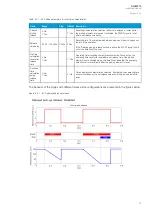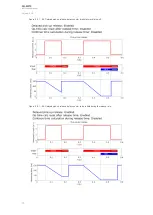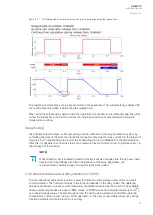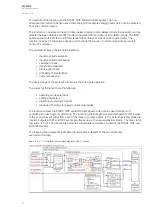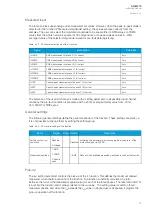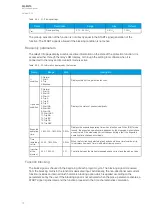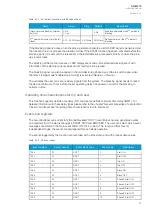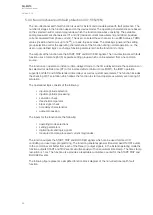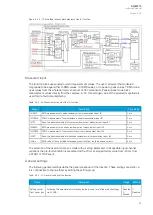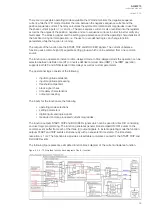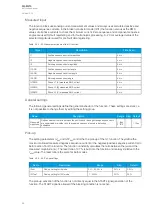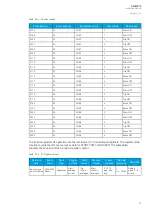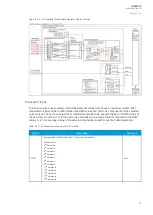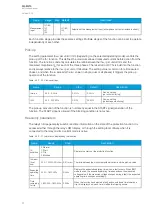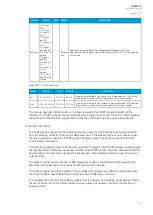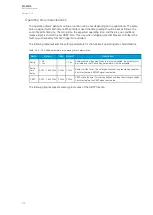
There are two possible operating modes available: the I2 mode monitors the negative sequence
current, while the I2/I1 mode monitors the ratio between the negative sequence current and the
positive sequence current. The relay calculates the symmetrical component magnitudes in use from
the phase current inputs
I
L1
,
I
L2
and
I
L3
. The zero sequence current is also recorded into the registers
as well as the angles of the positive, negative and zero sequence currents in order to better verify any
fault cases. The blocking signal and the setting group selection control the operating characteristics of
the function during normal operation, i.e. the user or user-defined logic can change function
parameters while the function is running.
The outputs of the function are the START, TRIP and BLOCKED signals. The current unbalance
function uses a total of eight (8) separate setting groups which can be selected from one common
source.
The function can operate on instant or time-delayed mode. In time-delayed mode the operation can be
selected between definite time (DT) or inverse definite minimum time (IDMT). The IDMT operation
supports both IEC and ANSI standard time delays as well as custom parameters.
The operational logic consists of the following:
• input magnitude selelction
• input magnitude processing
• threshold comparator
• block signal check
• time delay characteristics
• output processing.
The inputs for the function are the following:
• operating mode selections
• setting parameters
• digital inputs and logic signals
• measured and pre-processed current magnitudes.
The function outputs START, TRIP and BLOCKED signals which can be used for direct I/O controlling
and user logic programming. The function generates general time-stamped ON/OFF events to the
common event buffer from each of the three (3) output signals. In instant operating mode the function
outputs START and TRIP events simultaneously with an equivalent time stamp. The time stamp
resolution is 1 ms. The function also provides a resettable cumulative counter for the START, TRIP and
BLOCKED events.
The following figure presents a simplified function block diagram of the current unbalance function.
Figure. 5.3.4 - 73. Simplified function block diagram of the I2> function.
A
AQ
Q-M210
-M210
Instruction manual
Version: 2.04
88

